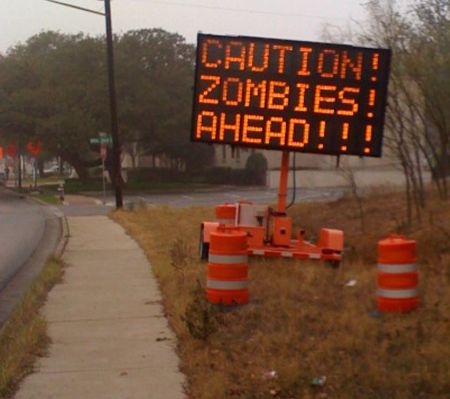At the commons, there was a sign on one of the doors instructing "Please do not use this door" and a recycling bin was put in front of the door for good measure while the door was being fixed. After the bin was moved, some people still followed the sign's instruction and did not use the door. Others pushed through the door with no regard to the sign, either having failed to read it or ignoring it with the belief that it was now kosher to use. I saw a student warn a friend not to use the door because of the sign to which he replied "this door has been fixed for like a week" and tore the sign off of the door. He took authority.
Robert put caution tape across one of the entrances to a school building and people trusted the tape's authority and walked around the building. No one took authority to rip through the tape or duck under it to use the door anyway. Robert wanted people to take that authority and challenge the (apparently extremely accessible) tape.
When is it appropriate to take authority over someone's artwork?



"Two city construction road signs near the University of Texas were hacked Monday morning warning the residents of Austin that a zombie attack was imminent." (Ganked this from woostercollective.com)
We also talked about the artist's authority over art. In generative art, when the artist allows external forces to take part in the process, does the artist still have authority? Where does authority go? If an artist creates a machine in order for the machine to produce the art, does the artist still own the work? They may not have absolute control over the process, but they set that organism or machine in motion, right? How much chance has to be involved in an artist's system before it is no longer their work?
When I was hanging the paint drawings from the marble machine Alex and I made, Berta pointed and said, "You?" I wasn't sure how to answer. Are Alex and I the artists? We are artists of the machine, but does that make the art ours? That indirect connection gets blurry to me.

No comments:
Post a Comment